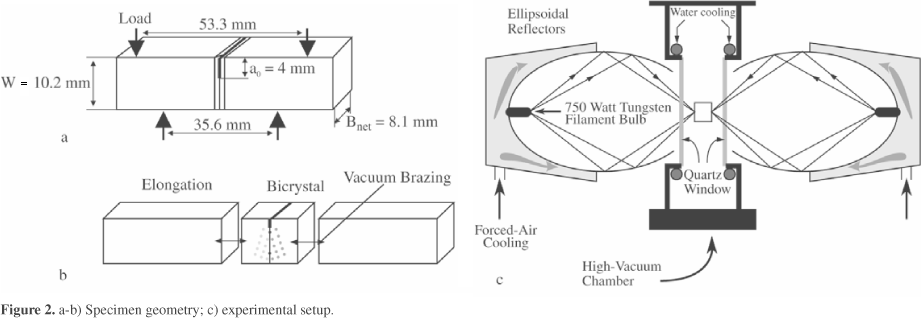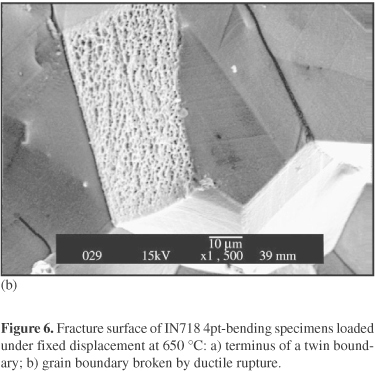There is a transition in the mechanical-failure behavior of nickel-base superalloys from ductile transgranular crack propagation to time-dependent intergranular fracture when the temperature exceeds about 600 °C. This transition is due to oxygen diffusion into the stress field ahead of the crack tip sufficient to cause brittle decohesion of the grain boundaries. Since very high cracking rates were observed during fixed-displacement loading of IN718, it is not very likely that grain boundary oxidation governs the grain-boundary-separation process, as has been proposed in several studies on the fatigue-damage behavior of the nickel-base superalloy IN718. Further studies on bicrystal and thermomechanically processed specimens of IN718 have shown that this kind of brittle fracture, which has been termed "dynamic embrittlement", depends strongly on the structure of the grain boundaries.
IN718; intergranular fracture; dynamic embrittlement; grain boundary diffusion











